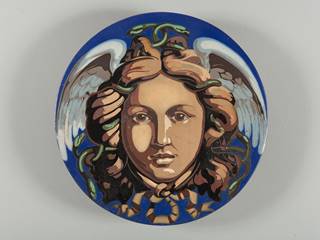Encaustic tile depicting Medusa, Minton & Co., 1895
American millionaire William Waldorf Astor bought Cliveden, a country house and estate in Buckinghamshire, in 1893 for $1.2m and set about remodelling many rooms of the house and improving the grounds.

